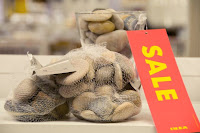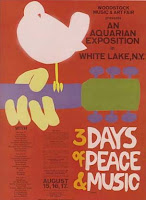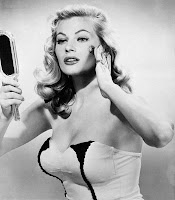Search
4 years ago
 In honor of this coming Labor Day, exercise some of those American rights by signing this petition from Credo Action, a green phone company and activist network, to have Verizon Wireless withdraw its support for a "pro-coal, anti-environment" rally co-sponsored by the dastardly dirty coal company, Massey Energy. This so-called Friends of America rally is scheduled for Monday, September 7th, at a former surface mine in West Virginia. The event's conservative political agenda is buried underneath an ambiguous website; at first glance, the only information one can glean from its amateur red, white, and blue design is that it is a free event, no alcohol allowed, and will be headlined by Fox favorite radio host Sean Hannity and entertainers Ted Nugent and Hank Williams, Jr. Only after probing around did I discover a link under "Register" that belies the rally's true intentions: "If you would like to sign a petition against the Waxman-Markey climate bill..." If that is not enough to make you shake in your boots, watch this 18 second YouTube introduction from Massey Energy CEO, Don Blankenship. He begins, blah blah, and then, hold on to your Stetson, "...we're also going to learn how environmental extremists and corporate America are both trying to destroy your jobs."
In honor of this coming Labor Day, exercise some of those American rights by signing this petition from Credo Action, a green phone company and activist network, to have Verizon Wireless withdraw its support for a "pro-coal, anti-environment" rally co-sponsored by the dastardly dirty coal company, Massey Energy. This so-called Friends of America rally is scheduled for Monday, September 7th, at a former surface mine in West Virginia. The event's conservative political agenda is buried underneath an ambiguous website; at first glance, the only information one can glean from its amateur red, white, and blue design is that it is a free event, no alcohol allowed, and will be headlined by Fox favorite radio host Sean Hannity and entertainers Ted Nugent and Hank Williams, Jr. Only after probing around did I discover a link under "Register" that belies the rally's true intentions: "If you would like to sign a petition against the Waxman-Markey climate bill..." If that is not enough to make you shake in your boots, watch this 18 second YouTube introduction from Massey Energy CEO, Don Blankenship. He begins, blah blah, and then, hold on to your Stetson, "...we're also going to learn how environmental extremists and corporate America are both trying to destroy your jobs."  In 2000, a Massey Energy subsidiary company based in Martin County, Kentucky, accidentally released 306 million gallons of coal slurry waste into two mountain streams, a $50 million dollar disaster that wreaked havoc on the aquatic wildlife and contaminated the water supply for local residents. The EPA has named the spill the worst ever environmental catastrophe to hit the southeastern United States. Also, their practice of mountaintop removal, a destructive method of coal mining that involves blowing up mountain tops, has buried rivers and streams under rock debris and caused epic eco-problems in the Mississippi region in terms of polluted water and flooding, and destruction to the biodiversity of the Appalachian Mountains [see image above] in West Virginia, Virginia, Kentucky, and Tennessee.
In 2000, a Massey Energy subsidiary company based in Martin County, Kentucky, accidentally released 306 million gallons of coal slurry waste into two mountain streams, a $50 million dollar disaster that wreaked havoc on the aquatic wildlife and contaminated the water supply for local residents. The EPA has named the spill the worst ever environmental catastrophe to hit the southeastern United States. Also, their practice of mountaintop removal, a destructive method of coal mining that involves blowing up mountain tops, has buried rivers and streams under rock debris and caused epic eco-problems in the Mississippi region in terms of polluted water and flooding, and destruction to the biodiversity of the Appalachian Mountains [see image above] in West Virginia, Virginia, Kentucky, and Tennessee.
 Ever since I began babysitting, I've been watching a lot of Noggin (the educational Nick Jr), and I don't know how I feel about the innundation of the subtle and not-so-subtle green tips for kids. Commercials for a new Nickelodeon project, The Big Green Help, run frequently. The ads are cute, featuring smiling, chubby-cheeked children enjoying eco-friendly activities like making new things out of their old jeans or planting in the backyard. While some of it can be over the top and/or out of touch with the target audience [for example, today's online suggestion is "Use paper products like napkins and paper towels made from recycled paper instead of right from trees." Sure that's a helpful, if not already evident, tip for adults who go grocery shopping and are in control of what they buy, but I think that's a little tough to ask of toddlers. Something younger ones might understand more readily could be using a towel to clean up messes.] Despite the little things, I still laud their efforts to get kids thinking about the environment at an earlier age.
Ever since I began babysitting, I've been watching a lot of Noggin (the educational Nick Jr), and I don't know how I feel about the innundation of the subtle and not-so-subtle green tips for kids. Commercials for a new Nickelodeon project, The Big Green Help, run frequently. The ads are cute, featuring smiling, chubby-cheeked children enjoying eco-friendly activities like making new things out of their old jeans or planting in the backyard. While some of it can be over the top and/or out of touch with the target audience [for example, today's online suggestion is "Use paper products like napkins and paper towels made from recycled paper instead of right from trees." Sure that's a helpful, if not already evident, tip for adults who go grocery shopping and are in control of what they buy, but I think that's a little tough to ask of toddlers. Something younger ones might understand more readily could be using a towel to clean up messes.] Despite the little things, I still laud their efforts to get kids thinking about the environment at an earlier age.
 What to do with twin two-year-old tireless tots on a rainy summer afternoon in New York City? I thought the question over in my head, knowing full well the natural, obvious answer, but imagining in some sort of impossible fantasy that yesterday's drizzly downer weather would miraculously clear up before I stepped outside. No ands, ifs, or buts about it, I needed to take them to splash around. So, begrudgingly, at their mother's behest, I suited the boys from head to toe in their rain gear, slipped on my wellies, and headed out to search for puddles along Central Park West.
What to do with twin two-year-old tireless tots on a rainy summer afternoon in New York City? I thought the question over in my head, knowing full well the natural, obvious answer, but imagining in some sort of impossible fantasy that yesterday's drizzly downer weather would miraculously clear up before I stepped outside. No ands, ifs, or buts about it, I needed to take them to splash around. So, begrudgingly, at their mother's behest, I suited the boys from head to toe in their rain gear, slipped on my wellies, and headed out to search for puddles along Central Park West.  Dunkin Donuts now has soy milk! Or at least, the franchise located on Broadway between 88th and 87th street does. Despite the secret grudge I harbor against DD for forever ruining the sight of "doughnut" spelled correctly, I am rejoicing-- no more Starbucks coffees that I don't really like but only order because they have tasty vanilla soy milk. Yay!
Dunkin Donuts now has soy milk! Or at least, the franchise located on Broadway between 88th and 87th street does. Despite the secret grudge I harbor against DD for forever ruining the sight of "doughnut" spelled correctly, I am rejoicing-- no more Starbucks coffees that I don't really like but only order because they have tasty vanilla soy milk. Yay! This is how a popular prom dress shopping site, edressme.com, feels inexplicably compelled to accessorize an organic dress (70% bamboo, 30% cotton) by eco-designer Kate D'Arcy, with an ugly, obnoxious, and oversized fake pink flower ::shudder::. Cause you know, nothing says green like a cheap and unnecessary outfit add-on. Lame.
This is how a popular prom dress shopping site, edressme.com, feels inexplicably compelled to accessorize an organic dress (70% bamboo, 30% cotton) by eco-designer Kate D'Arcy, with an ugly, obnoxious, and oversized fake pink flower ::shudder::. Cause you know, nothing says green like a cheap and unnecessary outfit add-on. Lame.
 A few weekends ago, when my reclaimed bicycle was first ready, part of my inaugural ride included a trip out to the Ikea in Red Hook. On my way through the store to check out, I stumbled across some shocking merchandise: rocks. Yes, rocks. A little bag full of small, polished, homogenous rocks. Not only would that purchase, no matter how cheap, be a gross waste of money (because, oh, rocks are only EVERYWHERE), but it's an egregious exploitation of the earth. It's analogous to companies putting water in a bottle, and selling it as if it was anything different than what comes out of your sink. Rocks are rocks, and you don't need Ikea to entice you to buy them.
A few weekends ago, when my reclaimed bicycle was first ready, part of my inaugural ride included a trip out to the Ikea in Red Hook. On my way through the store to check out, I stumbled across some shocking merchandise: rocks. Yes, rocks. A little bag full of small, polished, homogenous rocks. Not only would that purchase, no matter how cheap, be a gross waste of money (because, oh, rocks are only EVERYWHERE), but it's an egregious exploitation of the earth. It's analogous to companies putting water in a bottle, and selling it as if it was anything different than what comes out of your sink. Rocks are rocks, and you don't need Ikea to entice you to buy them. 

 I am having trouble coming up with something intelligent to say about anything (bad case of rainy Monday laziness compounded with writer's block), and so, I am going to write about my lunch: edamame. I was first introduced to the soy snack my freshman year at NYU, when a night "out" meant heading to the local hole-in-the-wall Japanese eatery for sake bombs. Small plates of edamame were distributed by a wary waitress amidst rowdy cheers and table slams. One salty pod in, and I was hooked.
I am having trouble coming up with something intelligent to say about anything (bad case of rainy Monday laziness compounded with writer's block), and so, I am going to write about my lunch: edamame. I was first introduced to the soy snack my freshman year at NYU, when a night "out" meant heading to the local hole-in-the-wall Japanese eatery for sake bombs. Small plates of edamame were distributed by a wary waitress amidst rowdy cheers and table slams. One salty pod in, and I was hooked.

 As I am currently incapacitated by a severe case of stiff neck, I decided to take the time to ponder life... and toothpaste. With my Tom's of Maine natural whole care gel getting down to its last squeeze, I can't help but think about my evolution from a mocking skeptic to an ardent fan.
As I am currently incapacitated by a severe case of stiff neck, I decided to take the time to ponder life... and toothpaste. With my Tom's of Maine natural whole care gel getting down to its last squeeze, I can't help but think about my evolution from a mocking skeptic to an ardent fan. I absolutely had to interrupt an intense session of last-minute paper writing with this discovery: molto moda Florentine designer Salvatore Ferragamo has an environmentally friendly bag line called Eco Ferragamo. The leather used to make these biodegradable bags is dyed using tannins from tree bark, and the insides are lined with hand-woven hemp.
I absolutely had to interrupt an intense session of last-minute paper writing with this discovery: molto moda Florentine designer Salvatore Ferragamo has an environmentally friendly bag line called Eco Ferragamo. The leather used to make these biodegradable bags is dyed using tannins from tree bark, and the insides are lined with hand-woven hemp. While it may forever remain a mystery what chemical concoction gave your mother's face-mask its green color back in the day, Wink Eco Beauty Bar in Prospect Heights, Brooklyn, can honestly say that its facials are green, in every sense of the word. Even in the few weeks that the spa has been open, the Green Glama facial has been a noticeable favorite among clients. Described as "the facial for the Eco-Fabulous," the signature 60-minute service includes deep cleansing, exfoliation, herbal steam, detox mask, and massage. The mask is made from all-natural ingredients-- green clay, an absorbing clay mineral that gives the mask its color namesake, purified water, herbs, and oils-- and targets accumulated pore-clogging sebum that causes whiteheads, blackheads, and pimples. The products leave no residuals aside from a gorgeous glow. There's also a Green Glama Express sans the sebum extraction process and massage for those tight on time.
While it may forever remain a mystery what chemical concoction gave your mother's face-mask its green color back in the day, Wink Eco Beauty Bar in Prospect Heights, Brooklyn, can honestly say that its facials are green, in every sense of the word. Even in the few weeks that the spa has been open, the Green Glama facial has been a noticeable favorite among clients. Described as "the facial for the Eco-Fabulous," the signature 60-minute service includes deep cleansing, exfoliation, herbal steam, detox mask, and massage. The mask is made from all-natural ingredients-- green clay, an absorbing clay mineral that gives the mask its color namesake, purified water, herbs, and oils-- and targets accumulated pore-clogging sebum that causes whiteheads, blackheads, and pimples. The products leave no residuals aside from a gorgeous glow. There's also a Green Glama Express sans the sebum extraction process and massage for those tight on time.